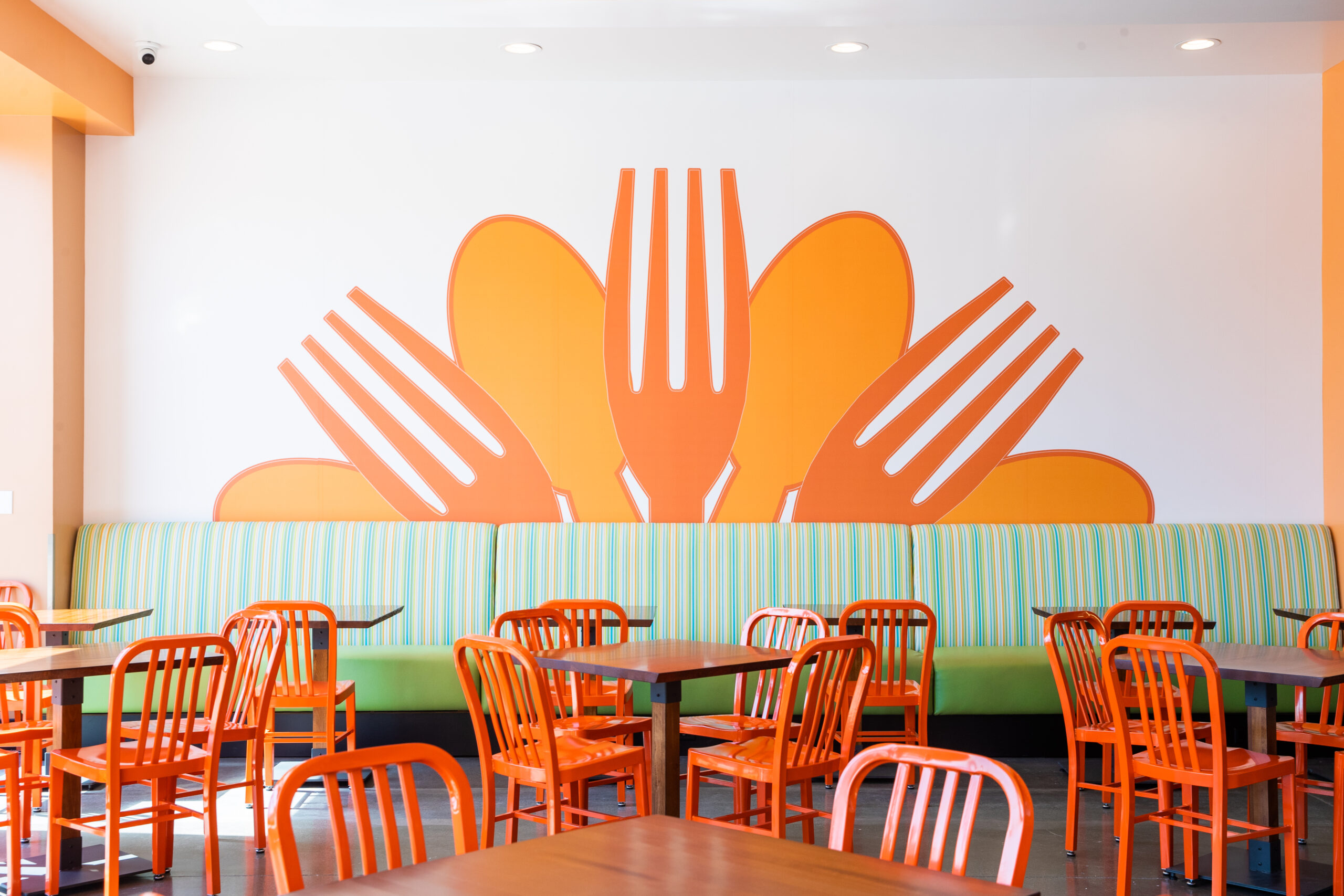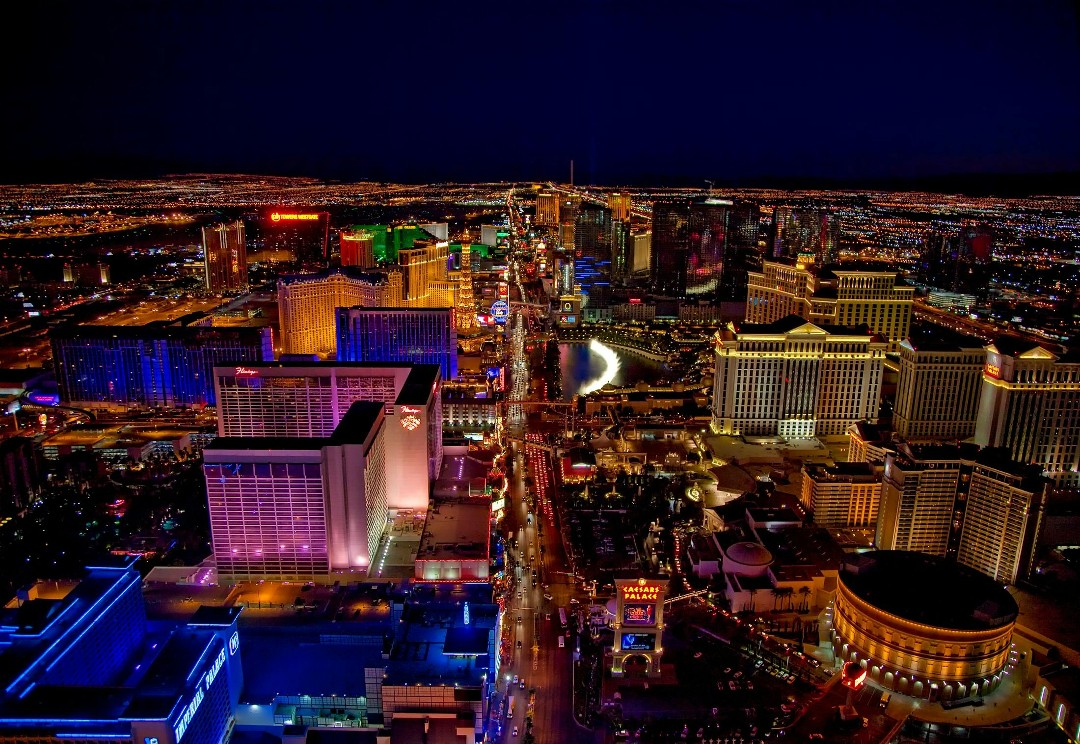High-Tech Menu Boards Revolutionize the Drive-Thru
By Ben Coley
October 24, 2024

The fast-food drive-thru has been a staple of American culture since the mid-20th century. However, some concepts have found static menu boards to be limiting in an era of rapid technological advancement and changing consumer expectations.
Across the country, quick-service chains have begun using digital menu boards—a dynamic, flexible, and efficient solution that appears to be revolutionizing the experience for customers and employees.
Wendy’s announced earlier in 2024 that it set aside $20 million in capital to complete a rollout of digital menu boards at company-run stores across this year and 2025. As of August 1, 30 to 35 corporate stores had the technology. The brand planned to ramp up its rollout in the second half of 2024.
“We like what we see. It’s a good experience for our consumer,” CFO Gunther Plosch told investors during the brand’s Q2 earnings call. “It’s a good experience for our crew members since you obviously don’t have to go out anymore and change our menu boards between the rest of day and the breakfast menu. So yes, committed to the investment.”
One of the most significant advantages is the technology’s ability to provide real-time updates. Burgerville CEO Ed Casey says digital menu boards allow for immediate changes in the menu, particularly when a product becomes unavailable mid-campaign. Nine of the brand’s roughly 40 locations in the Pacific Northwest have digital menu boards.
“You don’t have to worry about putting big ‘not available’ signs on your menu board,” Casey says. “You can just go in and make that change right away. It gives us a lot of flexibility.”
This ability to update menus in real time helps manage inventory and enables restaurants to adapt quickly to changing market conditions. For example, during promotional periods or in response to seasonal demand, digital menu boards can highlight specific items or deals, driving customer interest and boosting sales. The dynamic nature of these boards allows for strategic placement of high-margin items, which can lead to increased profitability.
For Burgerville, the integration of digital menu boards has been a game-changer. Casey says the brand plans to convert all of its drive-thru restaurants to digital menu boards eventually.
Additionally, digital menu boards significantly boost the visual appeal of menu items. Todd Kelly, COO of Diversified Restaurant Group, a franchisee of more than 300 Taco Bell restaurants, emphasizes the importance of clear, vibrant images in driving customer interest and confidence.
“People want to see new things; they want to see a digital image of a product that can change,” Kelly explains. “It helps from an accuracy standpoint for the consumer. They have more confidence that you’re going to get it right when they see their order actually showing up on the screen.”
The improved visual clarity provided by digital menu boards also contributes to a better overall customer experience.
Kelly notes, “The message is a lot clearer out there … The prices are much clearer so it’s much more readable and easier to read for the consumer. It also has a digital readout of what you order and a picture of what you order and how you’re modifying it. So it helps from an accuracy standpoint for the consumer. They have more confidence that you’re going to get it right.”
Similarly, Rachel’s Kitchen has seen positive feedback from guests regarding the digital menu boards. The Las Vegas–based fast casual, founded in 2006, opened its first drive-thru restaurant in December and equipped it with a digital menu board.
Founder and CEO Debbie Roxarzade explains, “I really like being able to have photos on our boards. Obviously, digital photos are a lot nicer, and then we can swap them out.”
She adds that the decision to install digital menu boards at the brand’s first drive-thru location was driven by a desire to stay current with technology and improve operations. The digital menu board has been crucial in simplifying real-time updates and the inclusion of an order.
“The feedback has been great,” Roxarzade says. “We do have team members that have worked at other places in the past, but haven’t had this and they definitely think that it’s easier for the guests as there could possibly be more information or if there’s a change that we need to make it’s more immediate that we can do it versus some of the other locations that they’ve probably been at or a different business they’ve been at, it’s a couple of days or a few days or a month or whatever, however long it takes to make those changes for them. So that’s been positive.”
A key factor was ensuring the system integrated seamlessly with Rachel’s Kitchen’s existing point-of-sale system, Revel. Otherwise, it would’ve added unnecessary complexity.
“Once I went through and looked at all the options that were out there and then compared, ‘OK, here are my top four and of that top four, three of them integrate with Revel,’” Roxarzade says. “And I started meeting with each individual and dived down a little bit deeper to see which one would be right for us.”
Michael Parlapiano, managing director at The Culinary Edge, is currently working with City Barbeque to do menu design and strategy for its drive-thrus, which have digital menu boards. He says the innovation helps optimize the consumer journey by making it easier to navigate complex menus.
“Digital menu boards allow us to be so much more dynamic with the way we think about testing different menu architectures and consumer journeys,” Parlapiano says. “They enhance order accuracy and reduce order-related issues.”
He’s seen the technology evolve over the past few years. Initially, the technology faced significant challenges such as low resolution, poor visibility, and subpar design. These limitations hindered the ability to effectively display food items and create an appealing menu layout. However, advancements in technology have dramatically improved the quality of digital menu boards, making them as visually appealing as static boards.
Parlapiano says that as the technology progressed, adoption rates increased. Despite these advancements, there are still pitfalls to avoid. One of the main challenges is balancing the dynamic features of digital boards without overwhelming customers.
“You can get a little bit excited about using the dynamic aspect of a digital menu board to constantly be animating, cycling through showcasing different things,” he explains.
The key, Parlapiano suggests, is finding a middle ground. Incorporating some animation and dynamic movement can enhance the customer experience without turning the menu into a constantly changing interactive screen.
“There’s a middle ground to having a bit of animation, having a bit of dynamic movement of imagery, and also cycling through an offering without going all the way to where it almost starts to look like a video game and it’s hard for the customer to actually pick out those items that they are looking for and put together an order,” he advises.
A potential opportunity with digital menu boards is the ability to use dynamic pricing, in which restaurants could seamlessly lower or raise listed menu prices based on the time of day. Earlier this year, Wendy’s said during its Q4 earnings call that it planned to test this. Following that announcement, the burger giant was met with a wave of criticism after consumers and media confused it with surge pricing during peak hours. Instead, the purpose was to lower prices during shoulder periods to boost traffic.
Michael says dynamic pricing hasn’t been much of a topic with The Culinary Edge’s clients. He believes the strategy seems interesting and smart for stimulating visits, but he also thinks the approach would have a difficult time gaining consumer acceptance. Parlapiano notes some guests might feel frustrated if they can’t access lower prices during peak times when their demand is highest.
“Dynamic pricing is not a new concept; we’ve seen it with technologies like Uber. But applying it to food is different. There’s an adoption curve and a hurdle for consumers to get over, especially when prices fluctuate based on the time of day,” he says.
Although The Culinary Edge has not actively engaged in dynamic pricing strategies, Parlapiano finds the concept fascinating and believes it warrants further investigation. He’s curious about the future integration of AI with digital menu boards, like facial recognition and loyalty programs.
“AI could present custom-tailored menus to customers based on their previous orders and preferences, potentially showcasing items they haven’t seen before or offering bespoke deals,” he says.
Blake Devillier, president of Carl’s Jr. USA, says the interactive nature of these displays empowers guests to verify their selections, minimizing the possibility of errors and reducing order-related issues. This makes communications in the drive-thru easier for team members while improving overall guest satisfaction.
Anthony Nguyen, vice president of brand marketing at Carl’s Jr., adds that digital menu boards offer greater flexibility in menu design and management.
“By enabling real-time updates, it is easier to introduce new items or highlight promotions,” Ngyuen says. “This agility allows us to more rapidly adapt to guest preferences, promotional opportunities, and the fast-paced competitive landscape.”
Kara Gasbarro, vice president of creative strategy at CKE Restaurants—parent of Carl’s Jr. and Hardee’s—says digital menu boards have played an important part in a recent menu transformation, which focused on customizable flavors. The simplified order decisions for guests increased customer engagement and effectively highlighted new products without interrupting or cluttering the ordering experience.
The introduction of dynamic content on the digital boards has also been well-received by team members.
“They like to see the brand come to life in new ways through the menu displays,” she says. “They have shared excitement about seeing creative elements like flames and craveable food photography delivered in a bolder format.”
From an operational perspective, digital menu boards provide better night-time visuals for guests and make the ordering process easier when it’s dark outside. The boards also feature an operator portal, which allows restaurant teams to preview menus, check accuracy, train staff, and prepare for menu changes efficiently.
However, Gasbarro notes that leveraging the full potential of digital menu boards requires a shift in mindset.
“Digital menus provide new and different opportunities than a traditional menu, so it requires the team to think differently and challenge existing paradigms about menus,” she says.
Although technology is influential, Parlapiano says restaurants shouldn’t forget the significance of hospitality, the bedrock of food service. If everything is working right, digital menu boards and great menu design can better the customer experience. When designed with the team members’ experience in mind, it’s a win-win, he says.
Parlapiano says that while technology is great, it must serve the humans involved to be fully adopted.
“Hospitality is core to what we think about every day at The Culinary Edge,” Parlapiano says.
This article was originally published on www.qsrmagazine.com.
Click here to read the original article.
© 2024 WTWH Media, LLC. All rights reserved.


